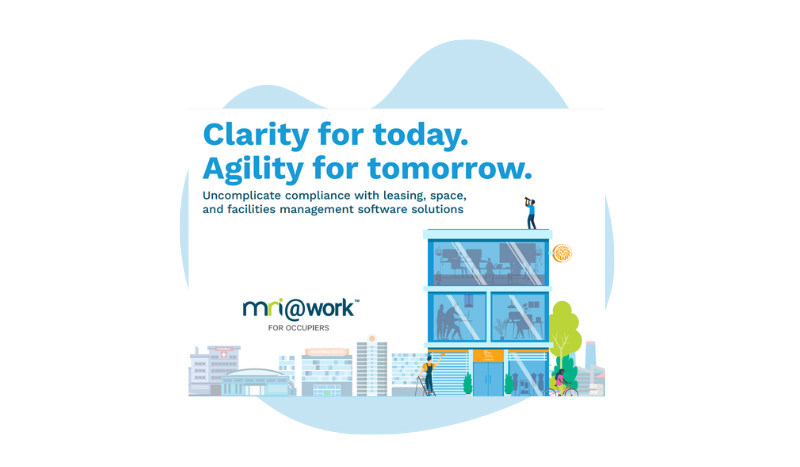Research shows attitudes to the future of work continue to evolve along with the pandemic
There is little doubt the pandemic has had an irrevocable impact on workplaces worldwide, accelerating the switch to remote working and the adoption of new digital technologies to help manage the transition. But are we really going to see a homeworking free-for-all from now on? Despite the fact the sudden mass shift to home working demonstrated to most businesses that staff and executive teams could continue to be productive outside of the office, companies are managing the changes to the structure of work carefully.
Attitudes and concerns to remote working are still changing
Interestingly, a survey by MRI Software and CoreNet Global, the leading association for corporate real estate professionals, revealed that commercial occupiers were, in fact, tightening remote working policies. At the same time, landlords – initially shown to be more complacent than their tenants about the long-term damage by the pandemic in similar research in Q1 of 2021 – were growing more alarmed about the impact of remote working on their business when surveyed again at the end of Q3.
The Q3 survey of a group of nearly 200 tenants and landlords from a range of industries worldwide found that commercial occupiers’ willingness to allow all employees the choice to work remotely fell significantly from 39% to 26% between March and September 2021. Indeed, 70% of survey respondents planned to institute policies limiting remote working eligibility while increasing requirements to be onsite – up from 60% in March.
Despite the fact some corporate occupiers appear to be reconsidering the degree to which they will allow home working, the research also showed that landlords’ apprehension over the rise of remote work increased significantly over the same period. It revealed that 43% were concerned about its impact on their business compared to just 26% in March.
These findings indicate that corporate views on remote working are continuing to take shape at each new phase of the pandemic – as companies digest learnings and see how their operations are affected as the situation continues to play out.
Remote working is still reshaping workspaces
Nonetheless, the report findings make it clear that the wholesale shift to remote working since March 2020 has had a transformative effect on ways of working and the future of the office.
The analysis contained in the full research report, entitled MRI Software Market Insights: Views from Real Estate Occupiers and Landlords on the Return to Office, demonstrates that while attitudes to home working are still adjusting, the working world remains a much different place in the wake of COVID-19. The survey results show that, overall, nearly 80% of responding commercial occupiers have increased the availability of remote work since the pandemic. It also shows that 69% of respondents said that the worldwide shift to remote working during the crisis has fundamentally changed their long-term approach to space usage – only slightly down from 71% in March.
The key consideration for business leaders is how to better utilize their physical spaces. Tenants and landlords have an opportunity to partner on ways to return to the office safely and effectively. As more employees return to the workplace, both commercial occupiers and landlords realize that PropTech tools will be essential to planning and maximizing space usage, meeting the requirements of a hybrid office, keeping the workforce safe, and developing the best real estate strategies for the future.
Q1 2022 target for getting more people back to the office
The report also shows that commercial occupiers expect to see more employees returning to the office to collaborate and make use of resources as soon as it is feasible. In fact, 57% of corporate tenants expected to have more than half of their workforce back in the office by the end of Q1 2022. Landlords were even more optimistic, with 67% expecting the majority of workers to be back onsite by the end of Q4 2021.
Other key findings indicate that fewer companies saw a need for wholesale change in the Q3 survey than earlier in the year:
- 42% of corporate tenants indicated in September that they would require less space after the pandemic, down from 56% in March
- 49% of commercial occupiers were converting or expanding their use of hot-desking, down from 54% in March
- At the same time, 61% of landlords expected their tenants to lease the same or more space despite the prospect of more remote working in the future, but this figure was also down from March (67%)
Clearly, while the fact that successful remote working in just about every corporate sector has opened eyes to the potential of a brave world of home working, as the pandemic continues to play out and more normalcy returns, many are now expecting less of a radical change to the status quo. As the prospect of getting people back into the office seems more practical, more occupiers and landlords seem to reconfirm its value.
Tapping PropTech to support change
Although wholesale support for an entirely new work dynamic going forward appears to be softening somewhat, there is little doubt that attitudes both among managers and employees to remote working will never be the same – and that companies will have to deal with that reality. The research demonstrates that the vast majority of corporate occupiers do realize that and see a strong need to adopt technologies to handle the changes they face in managing the workplace. The survey showed that 70% of companies occupying business premises plan to adopt new technologies to address changes in space usage.
More strikingly, the survey showed that an increasing proportion of landlords are beginning to see that they need new technology tools to deal with the workplace of the future. The percentage of landlords that thought their existing technologies were sufficient to manage changes in space usage dropped from 61% to 45% between the March and September surveys. The Q3 results also reveal that 61% of landlords expect to adopt new technologies to handle changing space needs, compared to 55% in the previous survey. The top functions named by landlords planning to adopt new technologies going forward included the ability to:
- Track and manage who is onsite (employees, visitors, contractors) – 63%
- Strategically manage long-term space utilization and layout – 53%
- Schedule and reserve desks – 47%
- Better enable hybrid meetings between onsite and virtual attendees – 42%
- Reserve and manage meeting space – 21%
The pandemic continues to see new phases as it develops. At the same time, businesses’ views on how to manage it and how they will reshape the way the office functions will continue to evolve as we move into 2022. Pandemic-driven technology adoption has enabled people to stay connected and collaborative no matter where they work and will continue to do so. However, organizations still recognize the benefit of bringing employees back to the office as part of hybrid working arrangements that support engagement, workplace culture and productivity. And to make a success of hybrid work, organizations need to put the right technology tools in place – like the MRI @Work solution set – to help inform decision-making and ensure businesses can continue to thrive in the face of all future challenges.
See the full survey results in the report here.
Multi-discipline technology for property owners, investors and occupiers.Property Management Software

Uncomplicate compliance with MRI @Work for Occupiers
Clarity for today. Agility for tomorrow. Organizations that lease space have more data at their disposal than ever. But leveraging it to make business-critical decisions has become increasingly complex. For diligent financial professionals who need t…
